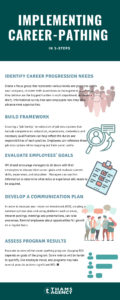How Career Paths Keep Your Company Healthy
Why Career Paths?
Employees consistently rank career advancement opportunities as an important factor in accepting and keeping a job. One retention strategy that is gaining traction within the HR industry is the idea of career pathing. Career pathing, or called career paths, is a comprehensive process offered by employers that ask employees to take an honest look at their career goals, skills, education, experience, and personal characteristics. Employees are then asked to make a plan for achieving what is necessary in each of these areas in order for the employee to advance within the company.
Career Path vs. Career Ladder
Traditional career ladders have been the norm for employers for years. Career ladders typically involve a progression of jobs within a certain field ranked from the highest to lowest based on the level of responsibility and pay. Career ladders tend to be hierarchical in nature, which can be a turnoff for younger generations. Millennials and Generation Z—those born between 1995 and 2010—tend to prefer companies will a less rigid corporate structure.
Career pathing offers employees greater flexibility and more room for advancement. While career pathing does include forms of traditional career ladders, it also offers employees dual career ladders and the opportunity to move horizontally within a company.
Benefits of Career Pathing
The following benefits can be achieved through a formal career-pathing program:
- Ability to recruit qualified candidates—If you are struggling to recruit top talent, look at the practices of your competitors. If your competitors offer career-pathing opportunities and you do not, you may be losing out on qualified candidates due to the allure of talent development programs at other companies.
- Greater opportunities for advancement—If your company offers few or no internal advancement opportunities, employees may feel stuck or bored in their current roles. As a result, employees who began in entry-level roles may look elsewhere for employment after they have gained a few years of experience. Career pathing provides employees with an ongoing mechanism to sharpen their skills, which can lead to mastery of their current jobs, promotions and transfers.
- Higher employee engagement and lower turnover— Today’s workers are less committed to the companies they work for than employees were 20 years ago. According to a recent study from Multiple Generations at Work, 91 percent of millennials will stay at a job for less than three years—a pace that equates to 15-20 jobs over the course of their careers. Employees at organizations with career pathing tend to be more engaged because they feel like their employer is concerned about their growth and long-term success. Engaged employees are less likely to look for a new job, which can help reduce turnover-related expenses.
- More leadership diversity—Diversity is key to bringing innovative ideas to your organization. By building your talent base and promoting internally, you can gain perspectives from employees who may have begun in entry-level positions and who bring various backgrounds and experiences to the table.
How to Implement a Career-pathing Program
Below are five main steps to consider when implementing a career-pathing program.
Step 1—Identify Career Progression Needs
In order to identify your company’s needs, consider creating a focus group that represents various levels and positions within your company to gauge what career development opportunities would resonate most with employees. You may also wish to sit down with supervisors or management to ask what they believe are the biggest hurdles in their departments regarding retention and engagement. Another cost-effective solution is to create a short, informal survey that asks employees how they view advancement opportunities at your company and what they would like to see improved.
Step 2—Build Framework
In order to develop a career-pathing program, you must first have a “job family,” or a collection of job descriptions that include competencies, education, experiences, credentials and necessary qualifications. Job descriptions should accurately reflect the duties and responsibilities of each position as well as list any minimum qualifications. Items within the job family should be easy to read since employees will reference these job descriptions when they map out their career paths.
Step 3—Evaluate Employees’ Goals
HR should encourage managers to sit down with their employees to discuss their career goals and evaluate their current skills, experience and education. Managers should compare their current abilities and qualifications to their short- and long-term career paths in order to determine what skills or experience still needs to be acquired. Managers should be honest and transparent in their feedback because false hopes or expectations can cause employee dissatisfaction.
Step 4—Develop a Communication Plan
In order to increase your return on investment (ROI), it is important to develop a robust communications plan. Using multiple communication platforms like email, intranet postings, meetings and presentations, can raise awareness of your program.
Not only should the initial implementation of the program be well advertised, but HR and management should continue to remind employees about opportunities for growth on a regular basis. For example, if your organization has a mentoring program, make sure that mentors are aware of their mentees’ career goals and that they work with them to provide the skills mentees will need to succeed. Another option for continued reinforcement is during performance reviews. Whether these are done annually, quarterly or more frequently, make sure that managers ask employees about their career path progress and see if there is anything they can do to help employees reach their goals.
Step 5—Assess Program Results
After rolling out a career-pathing program, it is important to evaluate its success. Gauging the program’s ROI will depend on the goals of the program. For instance, if your goal was to reduce turnover, you can measure your organization’s turnover rate. If it dropped, you can then add in cost savings from replacement costs, which include recruiting, orientation and lost productivity.
Remember that some metrics will be harder to quantify, like employee morale. In addition, remember that career-pathing programs may take several years to achieve a significant ROI, as changing company culture and employees’ perceptions of an organization can take time. Surveying employees to identify areas for improvement can also be an effective tool to optimize your program.

Want to learn more?
The Thams Agency can help you implement career pathing in your company. At your request, we can provide several additional resources and templates you can use to get your career path program off the ground. We’ve also found a great online resource from the Society of Human Resource Management (SHRM) at this link.

